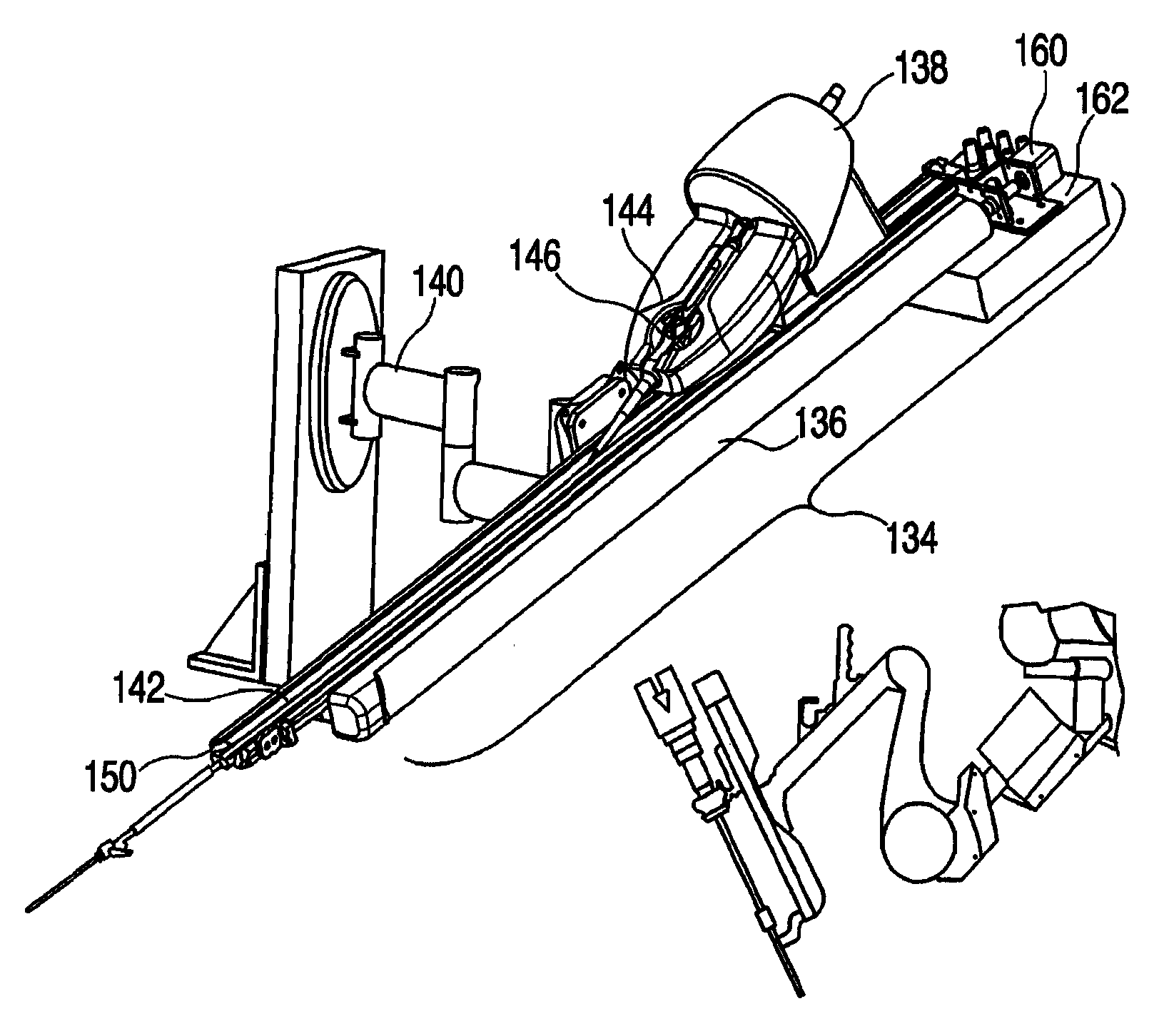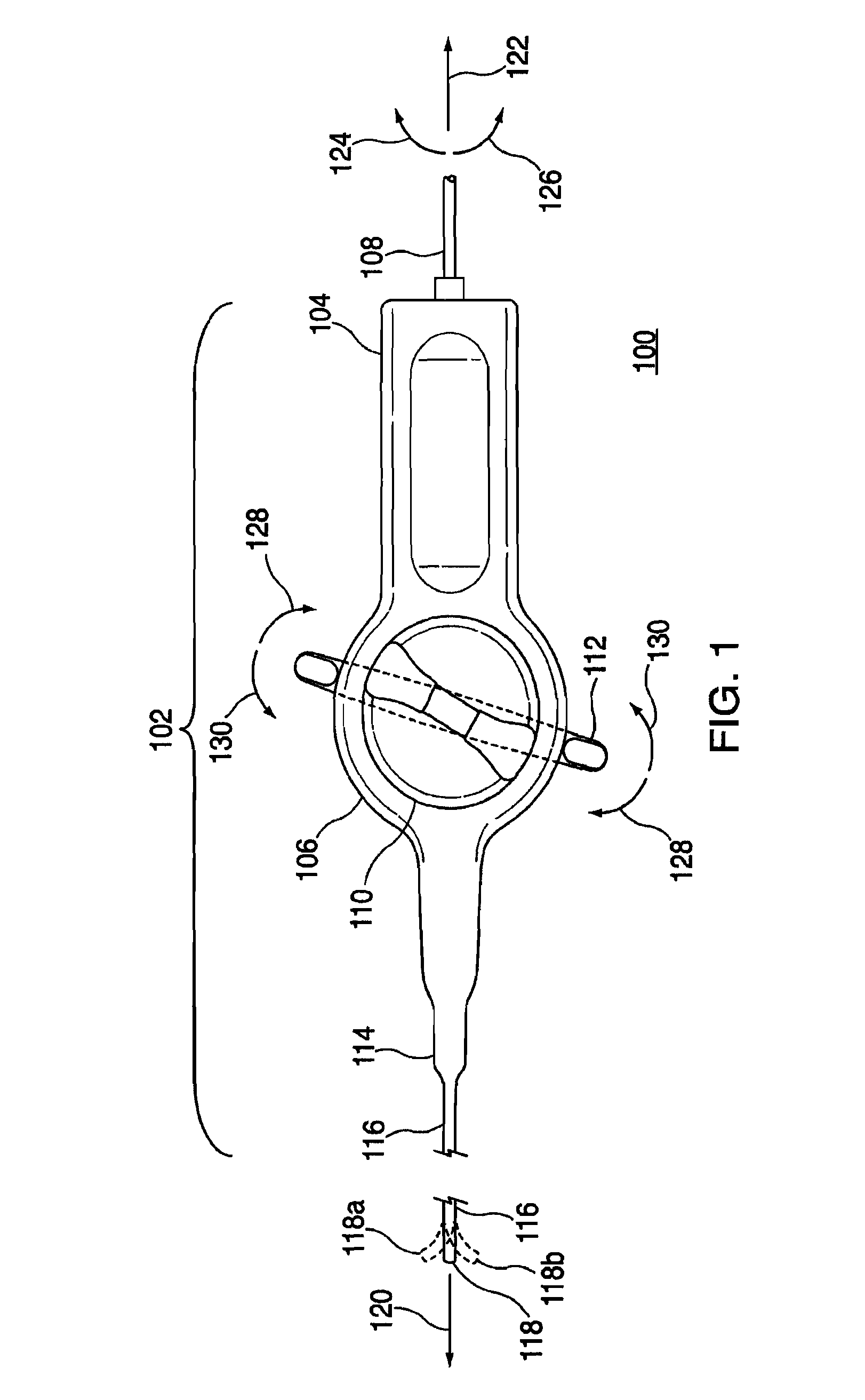Remotely controlled catheter insertion system
a remote control and catheter technology, applied in the field of positioning medical devices, can solve the problems of wearer injury and less than fully effective
- Summary
- Abstract
- Description
- Claims
- Application Information
AI Technical Summary
Benefits of technology
Problems solved by technology
Method used
Image
Examples
Embodiment Construction
[0275]The invention can perhaps be better appreciated by making reference to the drawings. In FIG. 1, a catheter 100 is shown in schematic fashion. Catheter 100 comprises a handle portion 102 which may be gripped by a user. Handle portion 102 comprises a proximal end 104 and a grip portion 106. Inserted into proximal end 104 may be wires 108 or tubing which could provide electricity, coolant, heat, etc., to catheter 100. Grip 106 comprises an adjustment dial 110 which may be used to adjust the tension of a knob 112. Handle 102 terminates in a distal flexible end portion 114 which in turn is in communication with a distally extending catheter sheath or tubular member 116.
[0276]As it is known in the art, catheter sheath 116 may be inserted into a patient by use of various known procedures and devices. Catheter sheath 116 terminates in a distal end 118. Distal end 118 may include, for example, electrodes for supplying electrical stimulation, coolant, heat, etc.
[0277]Catheter sheath 116...
PUM
 Login to View More
Login to View More Abstract
Description
Claims
Application Information
 Login to View More
Login to View More - R&D
- Intellectual Property
- Life Sciences
- Materials
- Tech Scout
- Unparalleled Data Quality
- Higher Quality Content
- 60% Fewer Hallucinations
Browse by: Latest US Patents, China's latest patents, Technical Efficacy Thesaurus, Application Domain, Technology Topic, Popular Technical Reports.
© 2025 PatSnap. All rights reserved.Legal|Privacy policy|Modern Slavery Act Transparency Statement|Sitemap|About US| Contact US: help@patsnap.com



